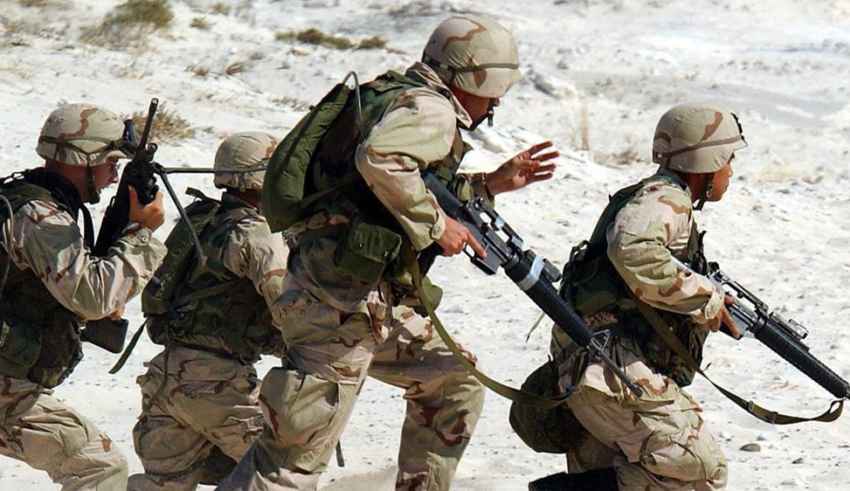
Some aspects of gender impacts in armed conflict have been addressed through case laws, statutes, and customary international law, especially the uneven effect of sexual violence on women, both combatants and civilians. However, this emphasis has led to other areas of gender being ignored, such as the operational risk of gender in armed conflict. As the United Nations Security Council Resolution 1325 on Women, Peace, and Security is nearing 22 years since its promulgation, many states across the globe have incorporated WPS into their strategy, not only through peace-building civil societies but by increasing the representation of women in the armed forces ranging from Leo Panetta, Ex-United States Secretary of Defense, lifting the ban on women in front-line combat roles and influx of women advisors in NATO. While implementing WPS has been criticized for militarizing feminism, the strongest opposition to the cause has been the operational risk of gender in an armed conflict.
Operational risk is often defined as the risk of loss resulting from inadequate processes, persons, or programs in the course of conducting operations. In this context, the operational cost of gender points to the risk of mission failures on the grounds of increasing participation of other genders in active combat. Claims of heavy force machinery and extreme terrain have been employed to attest to the operational risk of gender in armed conflict. Former American President Donald Trump’s failed ban on Transgender Persons from the Military and most countries placing bans on women in active combat, sighting operational costs and risks, are examples of this disparity. However, these differences are becoming increasingly obsolete in the era of modern machinery and artificial intelligence in armed conflict.
Nevertheless, States across the globe have prevented the advancement of women and transgender persons, with the latter not even qualified in most cases, in command roles and front-line combat. In 2020, the Modi-led Indian Government relied on sexist and misogynistic justification to prevent women from command roles in the Indian Defense Forces. The Government of India, before the Supreme Court of India, cited that the male soldiers are “predominantly drawn from the rural background[s], with prevailing societal norms” and are not “yet mentally schooled to accept women officers in command. They also cited pregnancy, marital responsibilities, and other familial commitments that would prevent them from carrying on the duties required of them. The Court, however, was quick to nudge the Government to reconsider its position.
While engaging in search and rescue missions and other peacekeeping operations, it is imperative to respect the culture and traditions as much as possible to prevent further violence and aggression. Many countries around the globe, especially in India and the Middle East, have different cultural equations regarding the role of men and women. In situations where women are involved, deploying female soldiers is crucial to ensure effective evacuation and minimize civilian casualties. Introducing women to the front line in the 20- Year American Mission in Afghanistan provided access to much-required intel previously not accessible to the male soldiers through Afghan women.
Irrespective of this, only a few countries, especially those in the Global West, have broken the gender barrier of women’s entry into active combat and implemented the provision of WPS. European countries have been a forerunner in allowing women in combat roles. A British Ministry of Defense study found Nordic countries particularly progressive in this regard.
Women in combat must be encouraged not merely to comply with the UNSCR but also due to the expertise in gender-specific dynamics they bring into the picture. The role of women in combat is especially relevant today and can even be traced to the overwhelming number of Ukrainian women stepping forward in the war against Russia. Even though more women form a higher percentage in the defense forces than ever before, they remain a tiny fraction compared to their male counterparts. Countries like India and other conflict zones would greatly benefit from training their women and advancing the participation of women in efforts to build peace and security. The Operational Cost of gender in armed conflict is, therefore, a fallacy.
References:
Tzemach Lemon, G( 2015, May 28).Women at war: How women ended up on the front-line in Afghanistan. TED. Retrieved July 11, 2022 https://ideas.ted.com/women-at-war-how-women-ended-up-on-the-front-line-in-afghanistan/
Cawkill P., Rogers A., Knight S., Spears L., (2009, September 8). Women in Ground Close Combat Roles: The Experiences of other Nations and a Review of the Academic Literature.
Biswas, S.(2020, February 8). India’s Soldiers ‘Not Ready for Women in Combat’. BBC. Retrieved July 12, 2022 https://www.bbc.com/news/world-asia-india-51385224
Women in Ground Close Combat. Ministry of Defense, United Kingdom. (Retrieved July 12, 2022) https://www.gov.uk/government/publications/women-in-ground-close-combat-gcc-review-paper
By The European Institute for International Law and International Relations.















